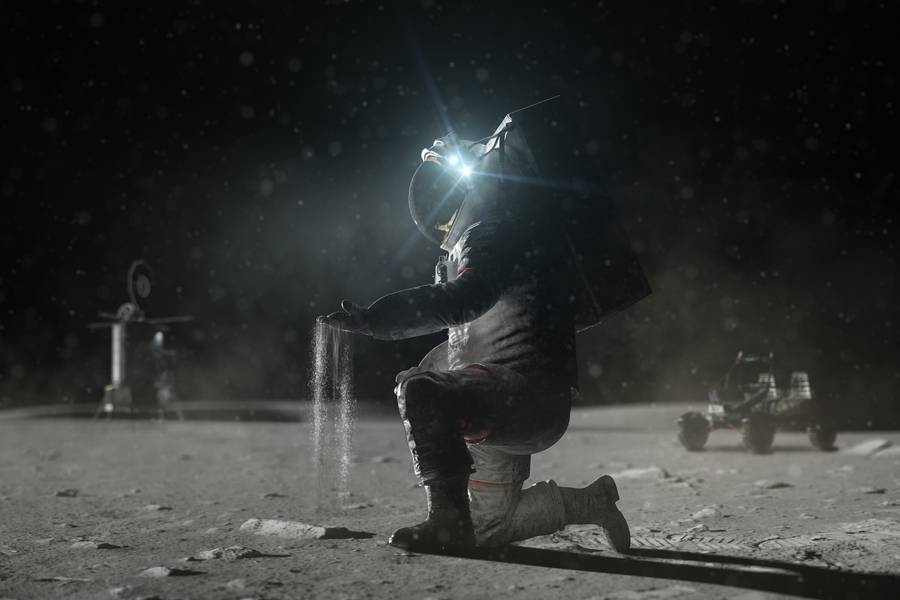A new study reveals the primary source of the moon’s tenuous exosphere, shedding light on billions of years of lunar history.
Decoding the Moon’s Delicate Atmosphere
The moon’s barely-there atmosphere has puzzled scientists for decades. Now, researchers from MIT and the University of Chicago have pinpointed its origins. Their findings, published in Science Advances, show that constant meteorite bombardment is the main force creating and maintaining the lunar exosphere.
Nicole Nie, lead author and assistant professor at MIT’s Department of Earth, Atmospheric, and Planetary Sciences, explains: “We give a definitive answer that meteorite impact vaporization is the dominant process that creates the lunar atmosphere.”
The team analyzed lunar soil samples collected during NASA’s Apollo missions. They found that over 4.5 billion years, the moon’s surface has been hit by meteorites of various sizes. These impacts vaporize certain atoms in the soil, sending them into the air. Some escape into space, while others remain suspended, forming a thin atmosphere that’s continually replenished.
Isotopes Tell the Tale
To unravel this mystery, researchers examined potassium and rubidium isotopes in lunar soil samples. These elements vaporize easily, making them ideal for studying atmospheric formation processes.
The team reasoned that lighter isotopes would be more likely to become airborne, while heavier ones would settle back into the soil. By measuring the ratios of light to heavy isotopes, they could determine which process – impact vaporization or ion sputtering from solar wind – played the bigger role.
Their analysis revealed that impact vaporization accounts for about 70% or more of the moon’s atmosphere, with solar wind responsible for the remaining 30% or less.
Justin Hu, a postdoc at Cambridge University not involved in the study, praised the research: “The discovery of such a subtle effect is remarkable, thanks to the innovative idea of combining potassium and rubidium isotope measurements along with careful, quantitative modeling.”
Why it matters: This research not only solves a long-standing lunar mystery but also provides insights into similar processes that may occur on other moons and asteroids. As space agencies plan more sample return missions, this study underscores the value of bringing extraterrestrial materials back to Earth for detailed analysis.
The findings could help scientists better understand the formation and evolution of atmospheres on other celestial bodies, potentially informing future space exploration and the search for habitable worlds.
Nie emphasizes the importance of sample return missions: “Without these Apollo samples, we would not be able to get precise data and measure quantitatively to understand things in more detail. It’s important for us to bring samples back from the moon and other planetary bodies, so we can draw clearer pictures of the solar system’s formation and evolution.”
As researchers continue to unravel the moon’s secrets, this study serves as a reminder that even our closest celestial neighbor still holds surprises. The ongoing investigation into lunar processes not only deepens our understanding of Earth’s companion but also provides valuable insights into the broader workings of our solar system.
If our reporting has informed or inspired you, please consider making a donation. Every contribution, no matter the size, empowers us to continue delivering accurate, engaging, and trustworthy science and medical news. Independent journalism requires time, effort, and resources—your support ensures we can keep uncovering the stories that matter most to you.
Join us in making knowledge accessible and impactful. Thank you for standing with us!

